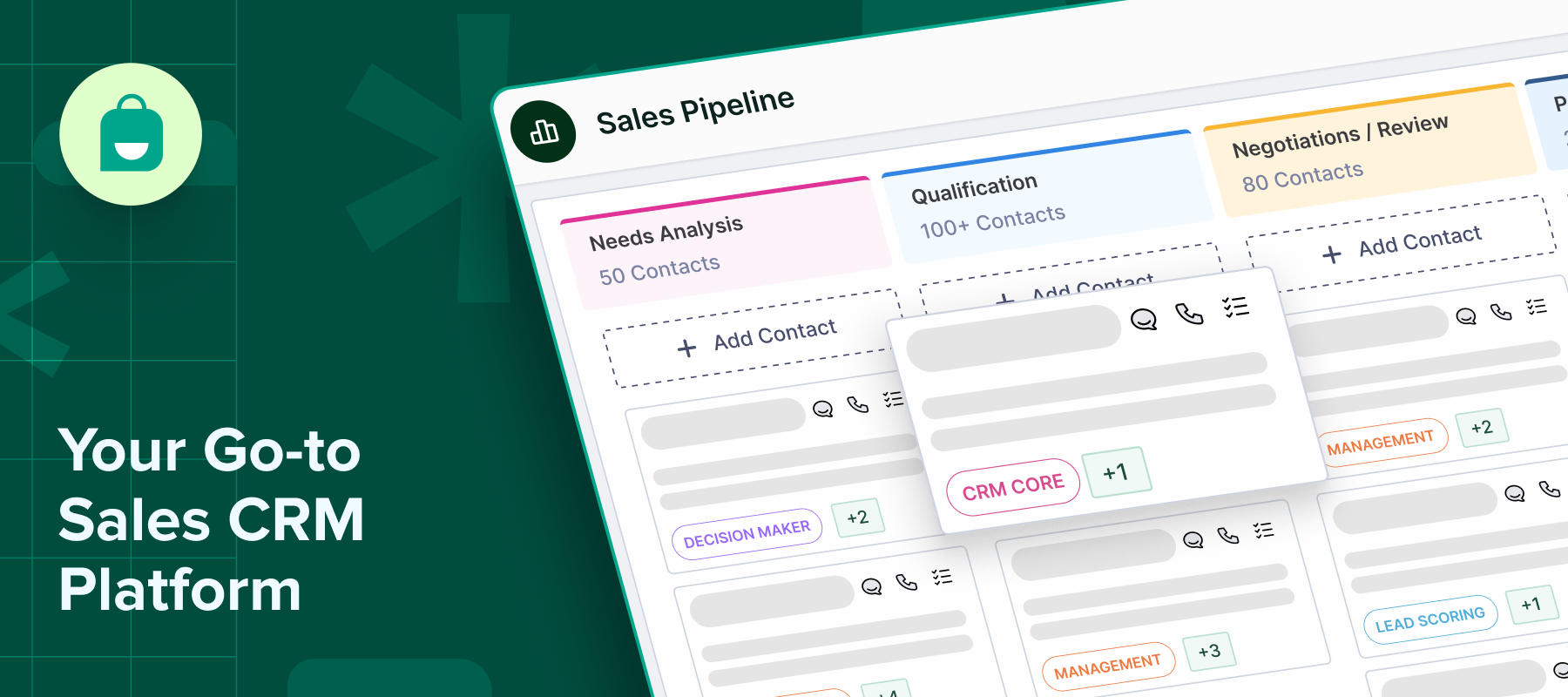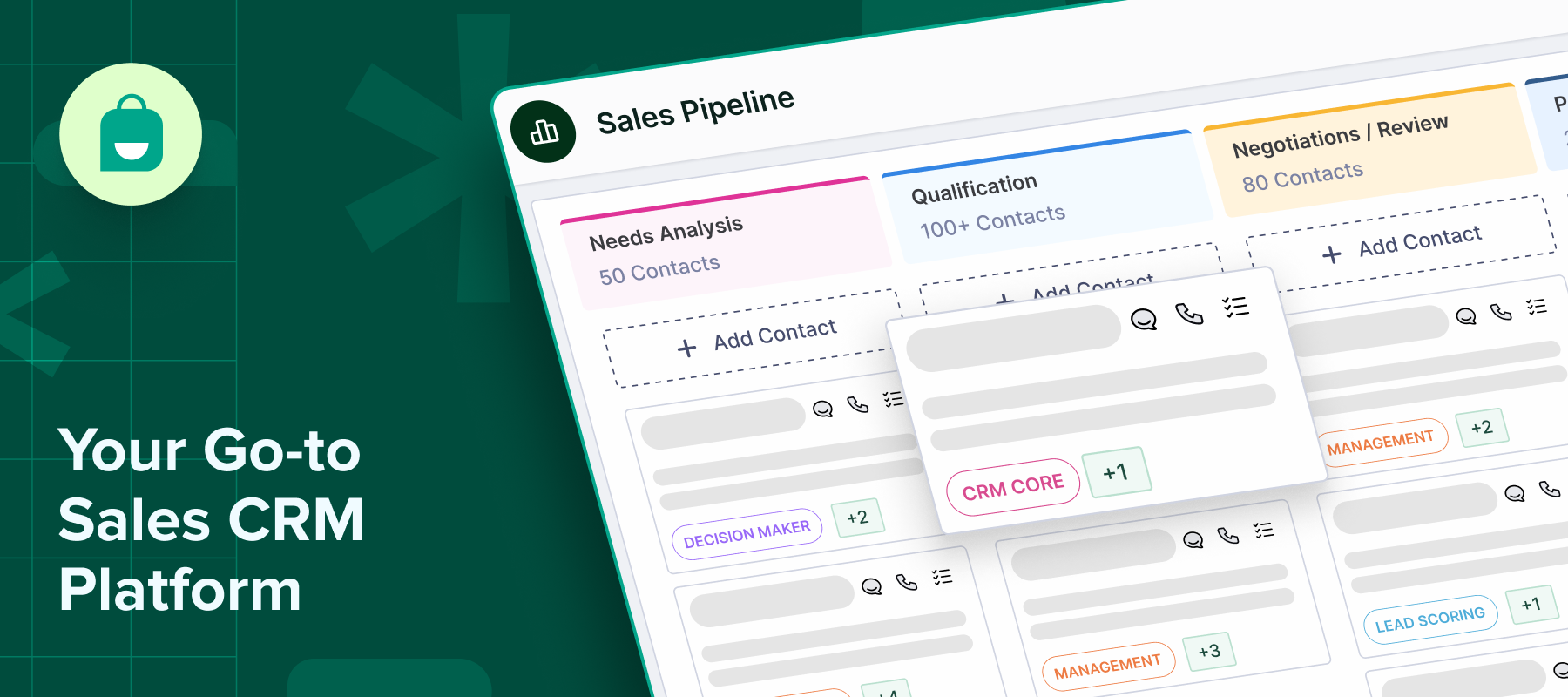Choosing the right Sales CRM tool in 2025 isn’t as straightforward as it used to be.
With so many platforms offering similar features, the decision can quickly become overwhelming. What fits a fast-growing startup may not work for an enterprise juggling complex sales cycles.
That’s exactly why we’ve put together this list of best practices to help you cut through the noise and make a confident, informed decision.
Best Practices for Selecting a Sales CRM Tool
Here are some best practices for selecting a Sales CRM tool:
1. Identify Your Business Requirements First
Before comparing CRMs, step back and define what your sales process needs and what it doesn’t. Many teams overspend on features they never use due to unclear requirements.
Start by mapping your sales flow from lead to conversion. Spot where deals slow down, which steps are manual, and where reps spend most of their time.
Next, break down your team structure:
-Who will be using the CRM?
-What access or visibility does each role require?
Define what you want the CRM to achieve, whether it’s faster lead capture, better pipeline visibility, or smarter automation.
List all key tools your team relies on, like email, WhatsApp, ERP systems, and make sure the CRM integrates smoothly with them.
2. Prioritize Must-Have Features
Below are essential features to prioritize in any modern sales CRM tool. Each of these should directly support your workflows and improve day-to-day efficiency.
-Contact and deal management: Keep all your prospect and customer information organized and linked to deals, so your team never loses track of opportunities.
-Sales pipeline visualization: Easily see where every deal stands and what actions are needed next through clear, drag-and-drop pipeline views.
-Workflow automation: Automate repetitive tasks like follow-up emails, task creation, and lead assignment to save time and reduce manual errors.
-Real-time reporting and analytics: Access up-to-date sales metrics and performance insights to make faster, data-driven decisions.
-Mobile access for on-the-go teams: Ensure your sales reps can manage leads, update deals, and access key data while in the field or working remotely.
3. Check CRM Integration Capabilities
Before finalizing a CRM, evaluate how well it integrates with your existing tools. The platform should connect seamlessly with your marketing systems to avoid data silos and manual work.
Here’s what you need to check:
-Marketing platform sync: Ensure the CRM integrates with tools like Mailchimp, WhatsApp, or Intercom, allowing lead and communication data to flow automatically between systems.
-Productivity tool support: Look for native integration with Google Workspace, Slack, and Zoom to keep workflows centralized and reduce context-switching.
-E-commerce and payment integration: If you handle online sales or transactions, the CRM should connect to platforms like Shopify and Stripe for real-time access to order and payment details.
-API access and plugin support: The CRM should offer open APIs or a plugin ecosystem, allowing you to customize and scale functionality as your business evolves.
-Legacy system compatibility: If you’re still using older internal tools, confirm the CRM can integrate with or easily import data from them to avoid a messy migration.
4. Evaluate User Experience and Adoption
A CRM should be easy to use from day one. Look for a clean, intuitive interface that requires little to no training. Navigation should be quick, and tasks like updating leads or tracking activity should feel effortless. Mobile access is essential so that your reps can work on the go, even offline, without losing functionality.
Select a CRM with role-based views, allowing each user to see only what’s relevant to them. During the trial, involve your team and test real workflows. Their feedback will show you if the tool fits seamlessly into your process, or if it’ll become shelfware.
5. Understand the Pricing Structure
Don’t just look at the base price, dig into what’s included. Compare free vs. paid plans to see which features are locked behind upgrades, especially essentials like automation or reporting.
Check if pricing is user-based or flat-rate. For growing teams, this can significantly impact long-term costs. Watch for hidden fees on add-ons like integrations, storage, or advanced analytics.
Look for discounts tailored to startups or annual commitments to cut down costs. Most importantly, ensure the plan scales easily as your team or needs grow, without forcing an expensive upgrade to enterprise tiers.
6. Look for Strong Support and Documentation
Reliable support makes a big difference, especially during onboarding or when issues arise. Prioritize CRMs that offer 24/7 customer support and access to a dedicated account manager or onboarding specialist.
To reduce your reliance on live support, look for platforms that offer:
–A well-organized help center
–Clear, step-by-step tutorials
–A searchable knowledge base
–Active user forums or peer communities
Also, check the platform’s Service Level Agreement (SLA) and average response times. Fast, dependable support helps your team stay focused and avoid unnecessary downtime.
7. Test Before You Commit
A hands-on test is the most reliable way to assess if the CRM can meet your operational needs and scale with your team effectively.
Here are some key areas to test:
–Free trial or freemium access to evaluate the platform without an initial cost
–Core workflows such as lead capture, pipeline tracking, and task management
–Involvement of real sales users to gather feedback based on actual usage
–System performance, including data sync speed, automation reliability, and overall responsiveness
–Cross-device usability to confirm a smooth experience across desktop, mobile, and tablet
8. Think Long-Term: Customization and Scalability
Your CRM should offer flexibility to match your sales process. Look for support to create custom fields, workflows, and modules that reflect how your team works. This prevents the need for workarounds or constant manual updates as your operations grow more complex.
The CRM should offer clear upgrade paths, multi-language and regional support, and the ability to handle larger teams and data volumes. Choose a platform that’s actively developed, with regular updates and new features. This ensures your CRM remains effective as your business evolves.
Conclusion
Start small, but start right. Select a CRM that meets your current needs without overcomplicating your setup, and ensure it has the flexibility to scale as your business grows. The goal is to stay agile, not get locked into rigid systems that can’t keep up.
If you’re looking for a CRM designed for growing teams and fast-paced sales environments, Interakt is built to keep you moving forward.


